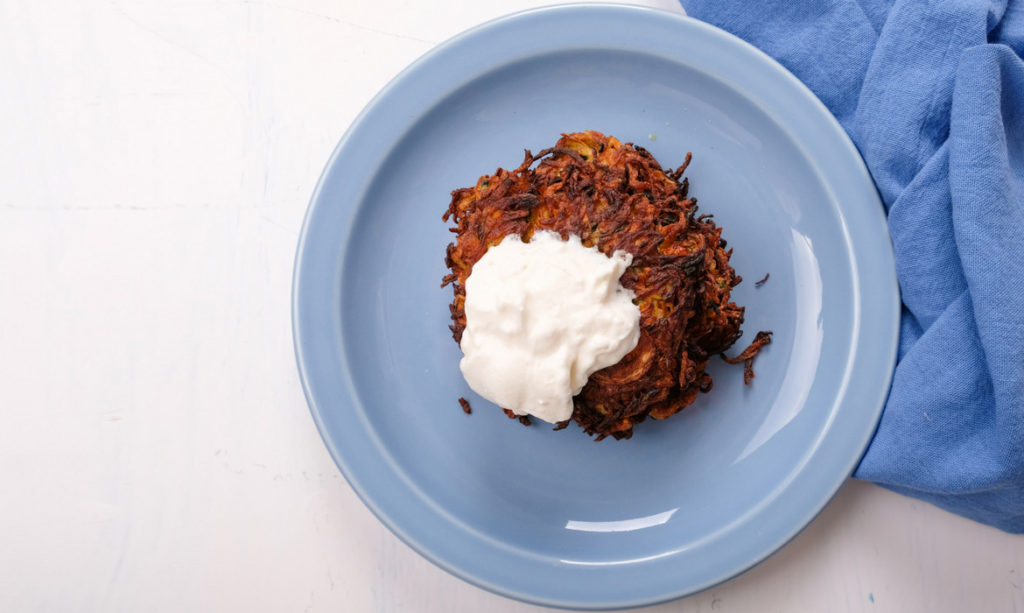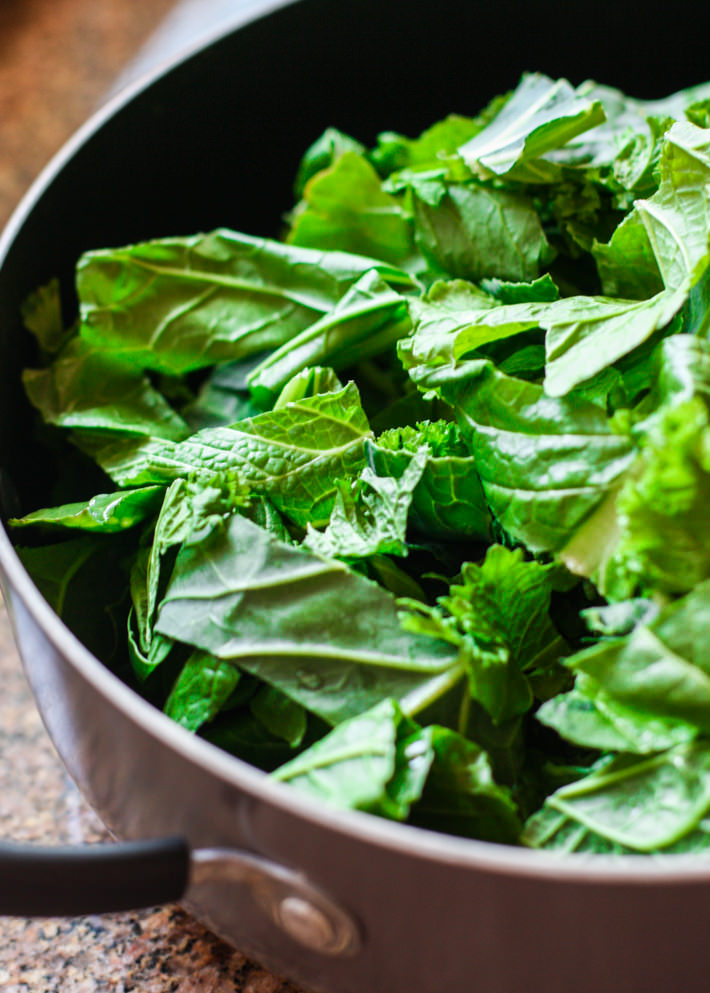Taro Root vs. Potato
This is a video on how to use a cool root vegetable: taro. One of the world’s favorite roots, Taro can be used similar to a potato for savory cooking, like potato salads, but is also great for sweets. Taro becomes almost custardy when cooked, making it perfect for pudding, dumplings, breads and more. It is also a great source of Fiber, vitamin B6, and Potassium.
 Recipe: Chef Martin Yan’s Taro Pancakes (like taro latkes!):
Recipe: Chef Martin Yan’s Taro Pancakes (like taro latkes!):
Ingredients:
- 1 pound taro, peeled
- 1 medium onion
- 3 green onions, chopped
- 1 egg, beaten
- 1 teaspoon salt
- 1/2 teaspoon black pepper
- 1-2 tablespoons all-purpose flour
- Cooking oil
- ½ cup sour cream
Directions
- Finely shred taro and grate onion into a large bowl. Drain off any excess liquid.
- Mix in green onions, egg, salt and pepper. Add enough flour to make mixture thick.
- Heat about ¼-inch of oil in a heavy skillet over medium-high heat until hot. Drop two or three taro mounds (about 2 to 3 tablespoons each) into oil; flatten to make 1/8-inch to ¼-inch-thick pancakes. Cook, turning once, until golden brown. Lift out with a slotted spoon; drain on a paper towel-lined plate. Keep warm while making remaining pancakes.
- Serve with sour cream on the side.
More on Taro Root:
(Pronounced TARE-oh or TAR-oh)

With more than 100 varieties of this starchy tuber grown worldwide, it is no wonder that Taro Root is such an important staple in Southeast Asia, Africa, India, China (where it is called Eddo), the Caribbean (where it is called Dasheen), and the Polynesian islands (where it is the main ingredient in poi, the Hawaiian national dish). Looking very much like malanga, this potato-like root can range in length from 5 inches to over a foot long. The flesh is often creamy white or pale pink and sometimes becomes purple-tinged once cooked. Taro Root, though not very flavorful raw, has a nutty flavor when cooked and is very easy to digest. Used much like a potato, Taro Root can be boiled, fried, or baked, while the edible leaves may be steamed and used just like spinach.
How to shop for Taro Root:
When selecting Taro Root, look for firm, brown-skinned roots with rings. Avoid soft spots or patches. Leaves should be fresh and bright green. Remove leaves just before using roots and save for later use. Store Taro Root as you would a potato. The leaves should be refrigerated and used within one week.
How to cook Taro Root:
To prepare, peel Taro Root with a vegetable peeler under running water to avoid any sensitivity to its sticky juices. Keep covered with water (in a bowl or pan) until ready to use.













 Recipe: Chef Martin Yan’s Taro Pancakes (like taro latkes!):
Recipe: Chef Martin Yan’s Taro Pancakes (like taro latkes!):

